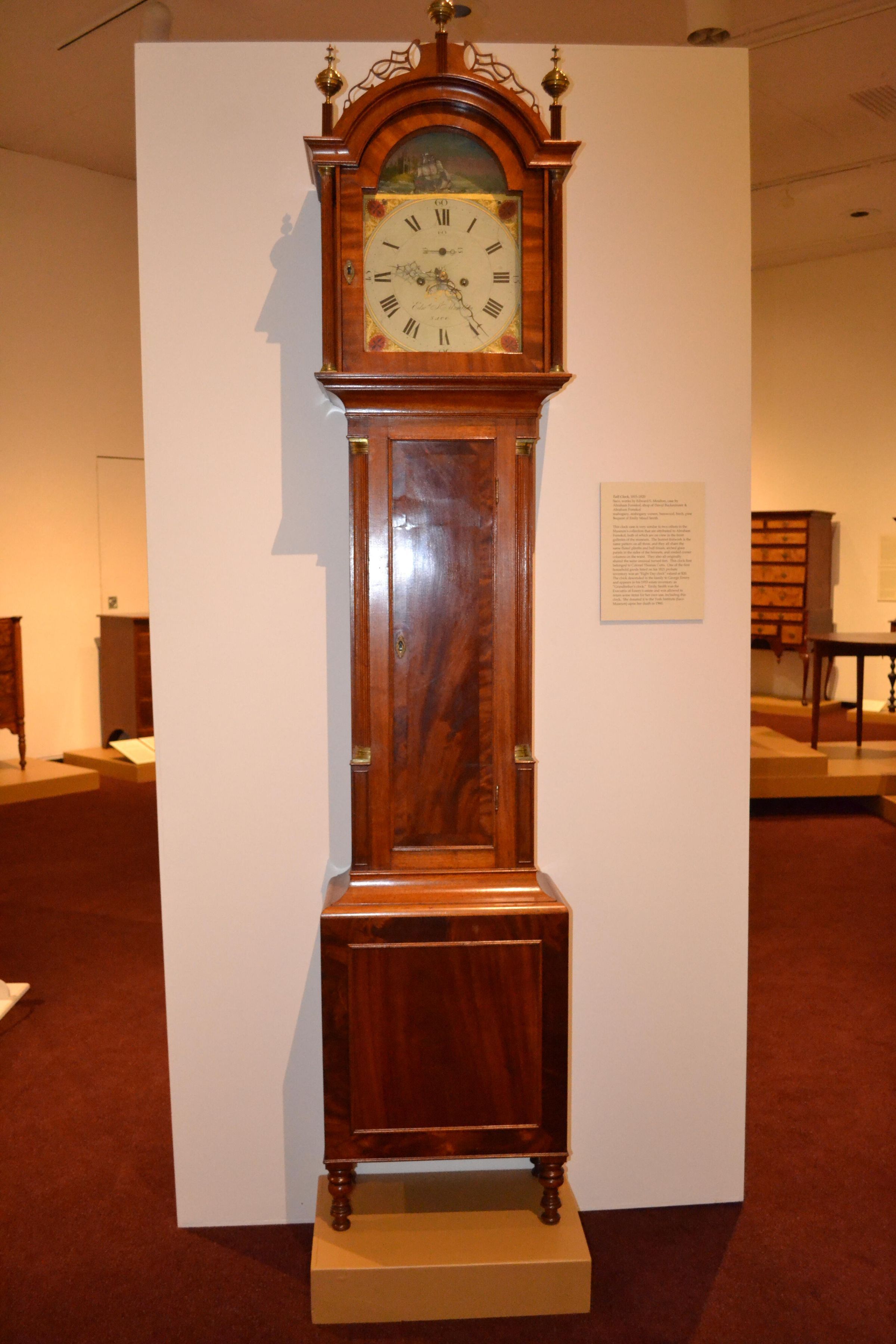Label Type
Object LabelLabel
Tall Clock, 1815-1820
Saco, works by Edward S. Moulton, case by Abraham Forsskol, shop of David Buckminster & Abraham Forsskol
mahogany, mahogany veneer, basswood, birch, pine
Bequest of Emily Maud Smith
Label Type
Cultural/Historical ContextLabel
This clock case is very similar to two others in the Museum's collection that are attributed to Abraham Forsskol, both of which are on view in the front galleries of the museum. The bonnet fretwork is the same pattern on all three, and they all share the same fluted plinths and ball finials, arched glass panels in the sides of the bonnets, and reeded corner columns on the waist. They also all originally shared the same unusual turned feet. This clock first belonged to Colonel Thomas Cutts. One of the first household goods listed on his 1821 probate inventory was an "Eight Day clock" valued at $20. The clock descended in the family to George Emery and appears in his 1933 estate inventory as “Grandfather’s clock.” Emily Smith was the Executrix of Emery's estate and was allowed to retain some items for her own use, including this clock. She donated it to the York Institute (Saco Museum) upon her death in 1960.
